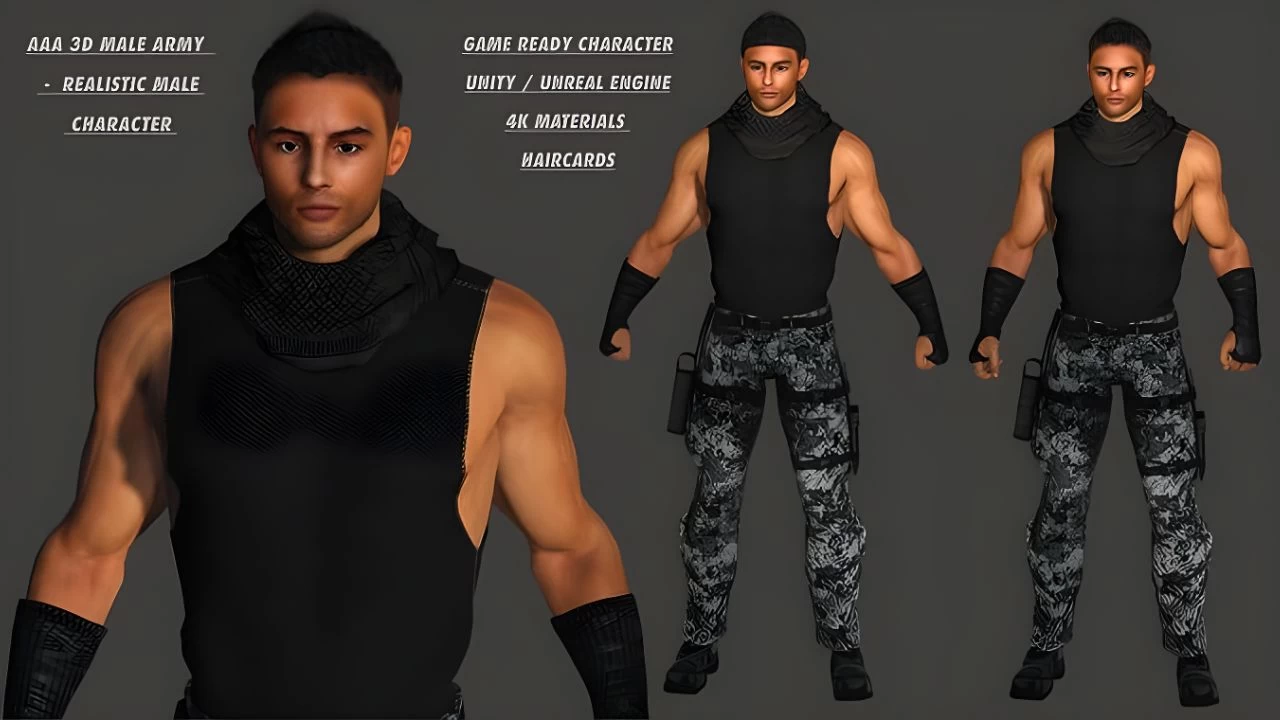How 3D models are created for AAA games: A Step-by-Step Guide

In the world of video games, creating breathtaking visuals is crucial, especially in AAA games. 3D models play a vital role in crafting these immersive game worlds. This article will take you through the entire process of developing 3D models for AAA games. We'll break down the software used by 3D artists to achieve professional-level results in texturing, rigging, animation, and UV mapping.
Step 1: Conceptualization
Before diving into 3D modeling, a well-formed concept is essential. Conceptualization involves brainstorming ideas, sketching, and creating concept art. These serve as the foundation for your model's development.
Step 2: Modeling
Modeling brings your concept to life in 3D. Artists employ specialized software like Autodesk Maya, 3ds Max, or Blender. These tools offer powerful features for creating and refining the shape of objects.
Step 3: Texturing
Texturing adds realism to your model. 3D artists utilize software like Substance Painter or Adobe Photoshop. They design textures, apply them to the model, and fine-tune properties such as color, reflection, and bump mapping for intricate detail.
Step 4: Rigging
Rigging involves adding bones and controllers to your model, enabling animation. Software like Autodesk Maya or 3ds Max is used to create the model's skeletal structure and assign controls for movement and deformation.
Step 5: Animation
Through animation software like Autodesk Maya or Unity, artists breathe life into the model. They create movements for characters, objects, and effects using keyframes, curves, and timelines, achieving realistic and captivating motion.
Step 6: UV Unwrapping
UV unwrapping places texture coordinates on the model. Artists use tools like Autodesk Maya or Unwrap UVW in 3ds Max to flatten the model's surface into 2D space. This allows for precise texture application and detailing.
Conclusion:
Creating 3D models for AAA games is intricate and time-intensive, demanding skill and specialized software. From concept to animation, every stage employs tools and techniques that deliver remarkable detail and realism. Advanced software empowers game creators to craft mesmerizing visual worlds that ignite players' imagination.
Explore Our Offerings:
If you're developing games with Unity, explore our collection of free 3D models, ready for use. Visit our site's Unity Resources section for a variety of models to enrich your game world.
For Unreal Engine enthusiasts, our extensive collection offers diverse 3D models:
Characters: Find various character models to bring your game personas to life, from lifelike humans to fantastical beings.
Weapons: Discover an array of weapon models to create epic battles, from firearms to fantasy weaponry.
Props: Elevate your game scenes with interactive objects, obstacles, and scenery from our Props section.
Environment: Craft immersive worlds with landscape, vegetation, buildings, and more from our Environment models.
Learn and Create:
If you're eager to master game development, our video courses cover Unity, Unreal Engine, Godot, and more. Delve into diverse aspects, from mechanics to graphics, and turn your ideas into reality.
Explore our collection of video courses on game development at avxgfx.com/video_tutorials/3d_tuts, regardless of your experience level. Equip yourself with valuable knowledge and tools to create captivating games on your preferred engine. Turn your imagination into immersive gaming experiences with our guidance.
Download How 3D models are created for AAA games: A Step-by-Step Guide Links:
Users of Guests are not allowed to comment this publication.
